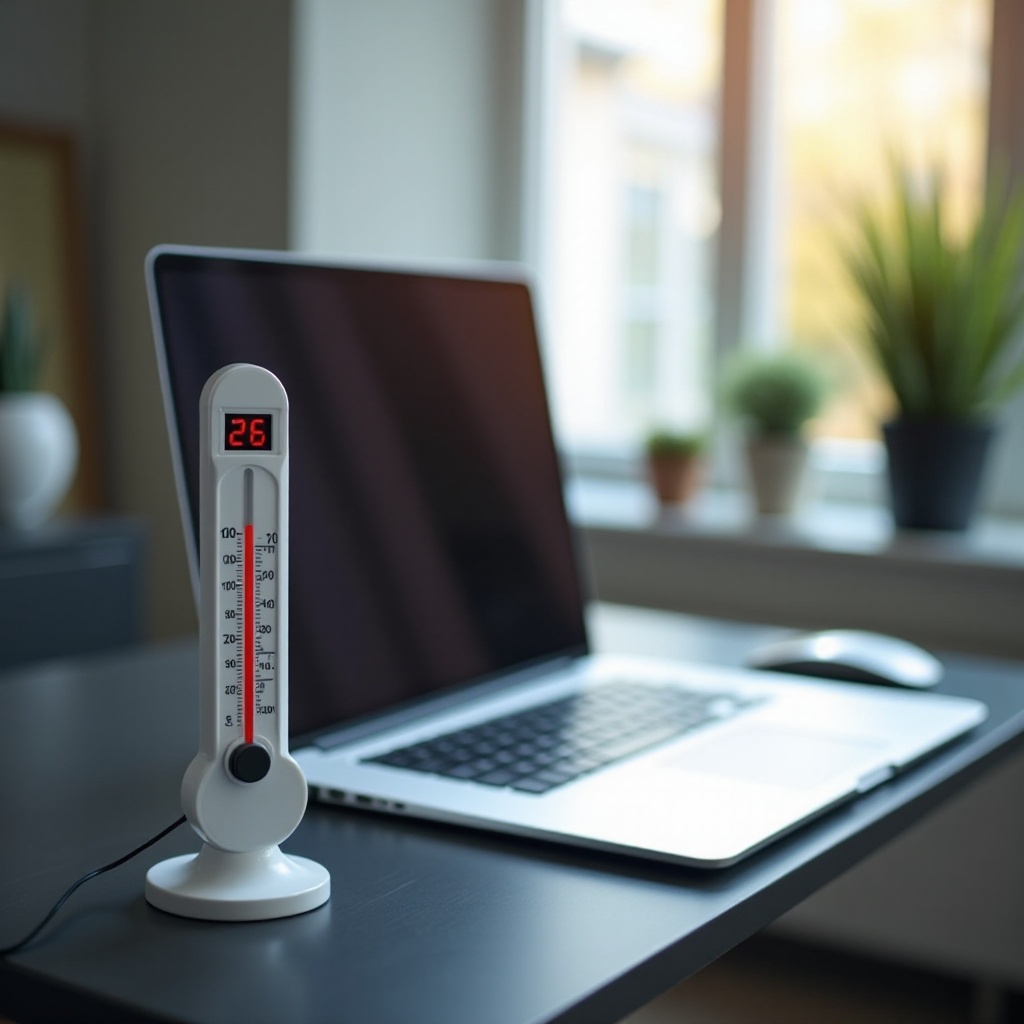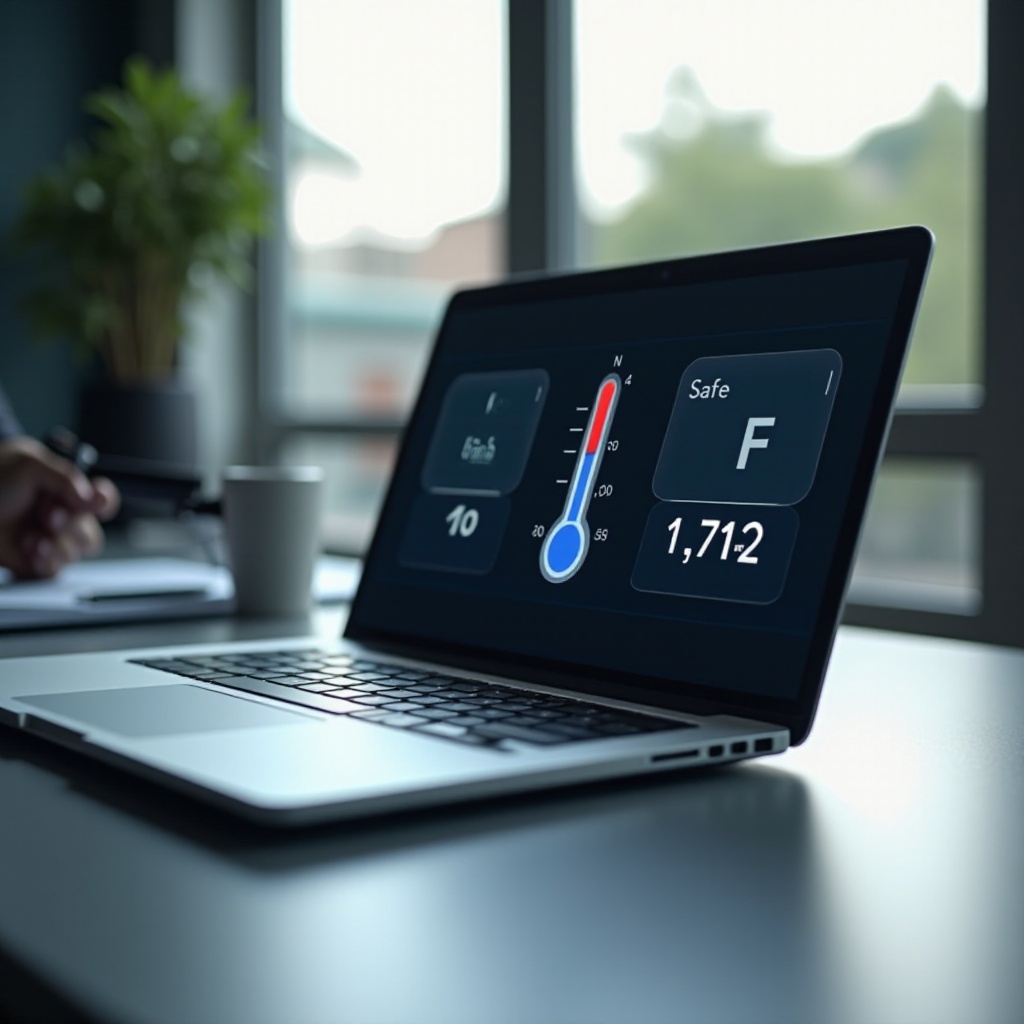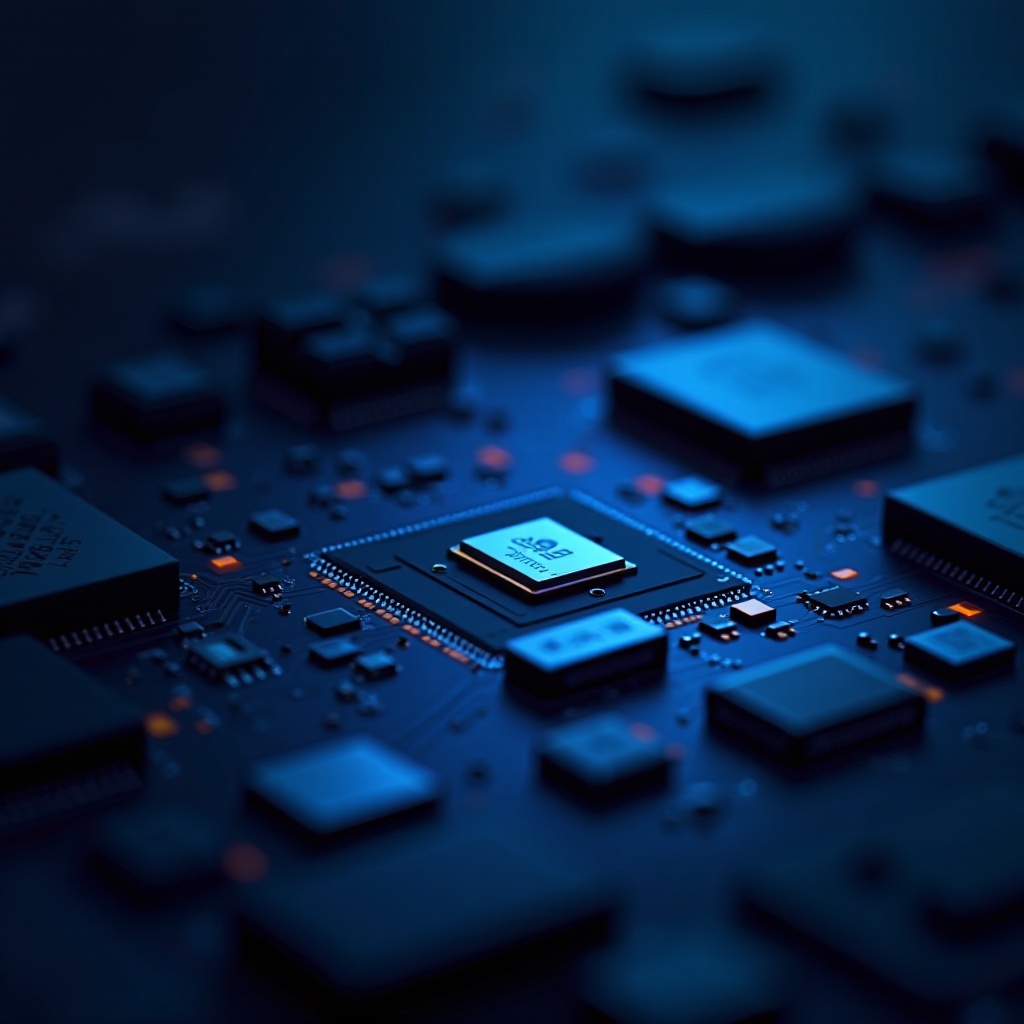Introduction
Laptops serve as essential tools for both professionals and enthusiasts, making efficient temperature management critical. Operating at inappropriate temperatures can lead to performance dips or even hardware failures. Ensuring your laptop stays within a safe temperature range maximizes utility and longevity while minimizing risks. With proper knowledge and techniques, users can maintain ideal conditions for their devices.

What is the Optimal Temperature Range for Laptops?
Most laptops perform optimally when temperatures are between 50°F (10°C) and 95°F (35°C). When running demanding applications, components like the CPU or GPU should remain below 158°F (70°C). Understanding these thresholds helps users take preemptive measures to avoid overheating issues and preserve the laptop’s lifespan.
Identifying the optimal range involves considering both device specifications and environmental conditions. Maintaining this range directly contributes to enhanced functionality and reduced risk of internal component damage.

Causes of Temperature Fluctuations in Laptops
Temperature inconsistencies can arise from several factors, fundamentally affecting a laptop’s operational efficiency.
-
Overclocking: This approach enhances a laptop’s speed but increases heat output. As the system works harder, it produces more heat, demanding an advanced cooling strategy.
-
Software Usage and Multitasking: Executing high-intensity tasks or running multiple applications intensifies CPU and GPU activities, resulting in higher temperatures.
-
Environmental Factors and Dust Accumulation: Surrounding temperatures and accumulated dust can impede airflow, causing heat build-up within the device.
All these contributors highlight the importance of pinpointing causes to implement effective temperature regulation techniques, paving the way for continuous monitoring.

How to Monitor Your Laptop’s Temperature
Proactive temperature monitoring prevents potential issues, maintaining the device’s health and efficiency over time.
-
Software Tools for Monitoring: Applications like Core Temp, HWMonitor, or Speccy offer real-time insights into the laptop’s thermals, helping users assess performance.
-
Setting Up Alerts and Thresholds: Configuring alerts for when temperature surpasses certain limits promotes timely intervention to prevent overheating.
-
Manual Checks and Observations: Regularly checking for physical signs of overheating, such as unusual heat spots or noisy fans, can signal underlying problems.
Adopting a robust monitoring system ensures the laptop operates within safe temperature limits, guiding further measures to control these temperatures.
Techniques to Maintain Optimal Laptop Temperatures
With a thoughtful approach, maintaining ideal temperature conditions becomes a manageable task.
-
Regular Maintenance and Cleaning: Consistent cleaning of vents and fans is essential to prevent dust build-up, ensuring unobstructed air circulation.
-
Use of Cooling Pads and External Fans: Enhance the internal cooling systems with external accessories, which provide additional airflow and heat dissipation.
-
Effective Software and Usage Optimization: Streamline operations by closing unnecessary applications and adjusting power settings to balance performance and heat production.
These strategies contribute to sustaining optimal temperature levels, reducing the likelihood of overheating and associated risks.
Long-term Implications of Poor Temperature Management
Ignoring temperature regulation can result in significant consequences. Constant exposure to high temperatures accelerates wear and tear, diminishing CPU and GPU efficiency and potentially leading to hardware damage. Over time, the battery may suffer reduced capacity, shortening the laptop’s overall lifespan. Thus, addressing temperature issues is not only preventive but essential for maintaining peak performance and extending device durability.
Conclusion
Effective temperature management is crucial for any laptop user committed to optimal performance and enhanced longevity. By thoroughly understanding the ideal temperature ranges and employing strategic monitoring and maintenance practices, users can safeguard their devices. Simple adjustments in daily operations and maintenance routines significantly contribute to a more efficient, reliable laptop experience.
Frequently Asked Questions
What is a safe maximum temperature for laptop components?
Most laptop CPU and GPU components should stay below 158°F (70°C) during intense activities to avoid damage.
Can high temperatures permanently damage my laptop?
Yes, prolonged exposure to high temperatures can damage components over time, affecting both performance and lifespan.
How often should I clean my laptop to maintain its temperature?
Cleaning every three to six months is recommended, but dust-prone environments may require more frequent maintenance.

